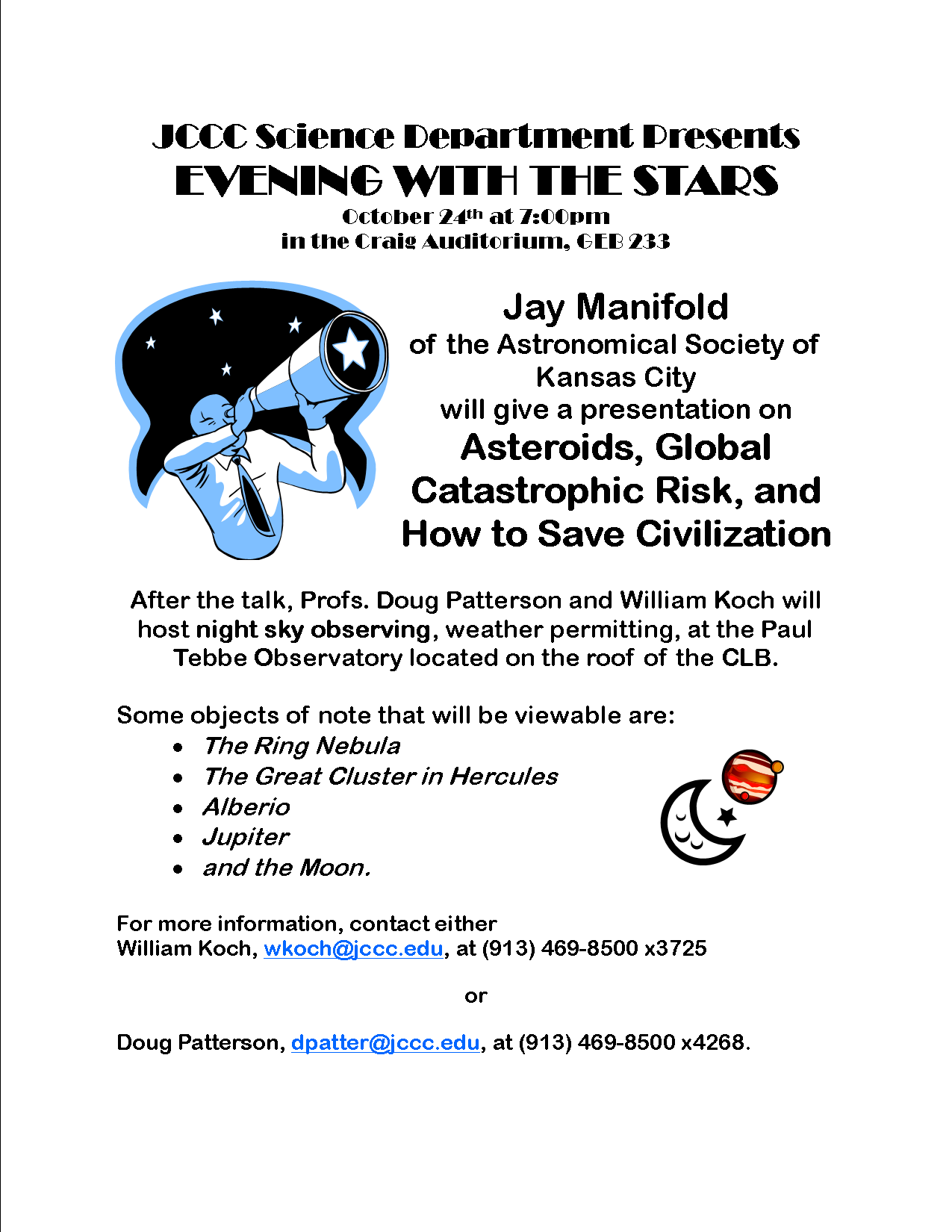
Evening With The Stars for Fall 2009


The corn is starting to dry out, so it must be time for the Fall semester to start up again. Here at JCCC, though, the work doesn’t stop just because its Summertime. This past summer term, I had an honors student that worked on astrophotography and differential photometry. Both were fun projects, and I’ll write more about the variable star photometry later. For now, let me show off some of the excellent images G. W. Francis took with our SBIG ST-8 CCD camera and his own Nikon D40.
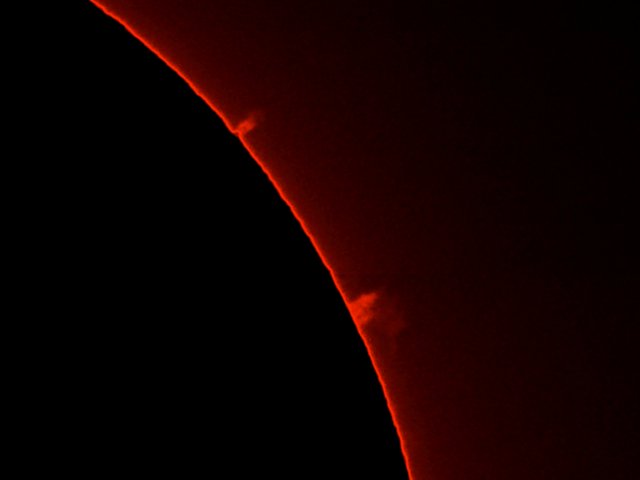
Every Monday evening in June, it seemed, was cloudy, so we decided to take advantage of a sunny afternoon and image the Sun using an H-alpha filter. This filter only allows the one wavelength of red light emitted by hydrogen atoms which enables us to see features like the prominence shown above.
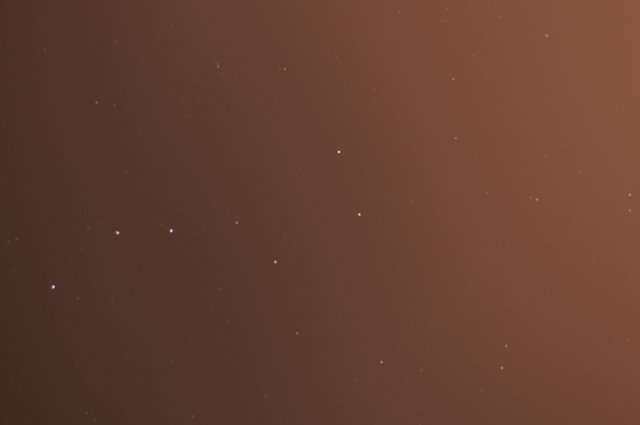
GW mounted his D40 onto the piggyback mount of our Celestron 8″ SC telescope and tried to take an image of the constellation Ursa Major. Most of what he got was the reflected light from the sodium vapor lamps in the parking lot. This was the last night of observing at the college. The light pollution was just too much for us.
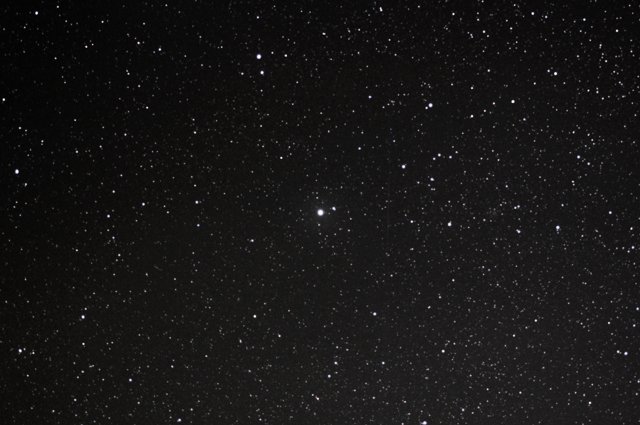
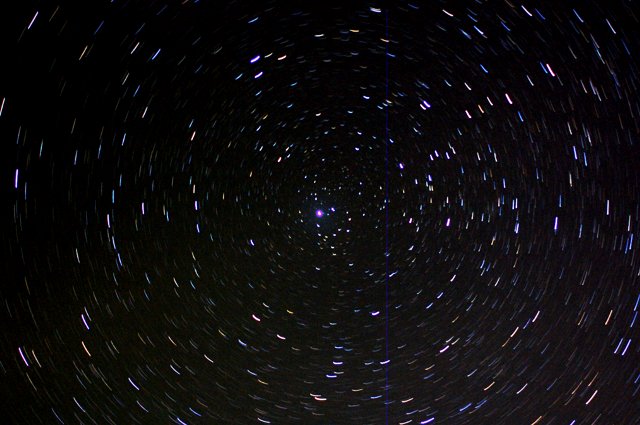
GW mounted his Nikon D40 on a tripod and pointed it northward, centering Polaris in the field of view and collected 21 images each with a 30-sec exposure. By rotating and aligning each image, a detailed view of the Northern Night Sky is revealed. When the images are not rotated, but simply stacked and merged together, the rotation of the Earth becomes apparent as the stars leave trails through the sky. Notice that Polaris, which is very close to the North Celestial Pole, remains nearly fixed in place.
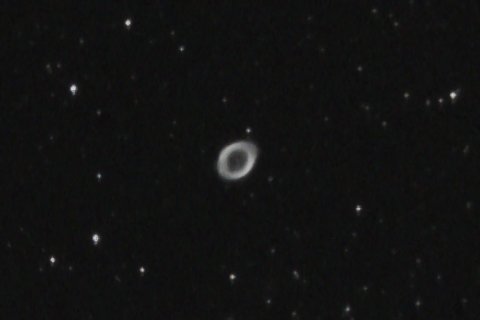
Before settling down onto the program variable star for the evening, the we targeted several Messier objects. M57, the Ring Nebula, is a planetary nebula. A star, not unlike our Sun, threw off its outer layers as it died leaving behind an expanding shell of gas and a small but staggeringly hot white dwarf in the center.
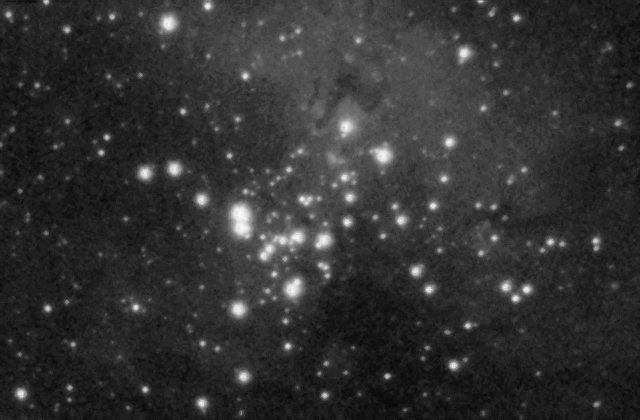
M16, The Eagle Nebula, made famous by the Hubble Telescope’s image Pillars of Creation, had to be imaged by peeking through the gaps in a maple tree near where we had setup the telescope. The location was chosen for optimum viewing of the variable star DY Her, not M16, but we got lucky. In the image you can make out the famous pillars in the top center of the image.
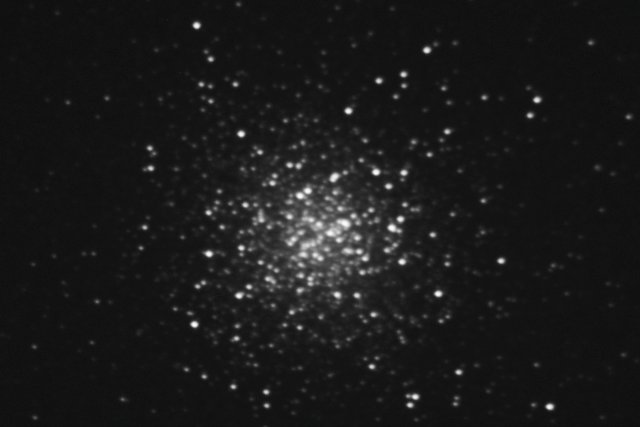
M13, the Great Cluster in Hercules, is one of the closest (relatively speaking) globular clusters to our planet. This dense cluster is home for around a million ancient stars.
Rather than using the SBIG ST-8 CCD camera, I opted for my Nikon D90 for these photos. In some respects its better, in other ways not so much. First stop: The Sun.

In this image, you can see the Sun’s chromosphere and a small prominence on the left side of the image. The camera doesn’t have the resolution nor dynamic range of your eyeball, so cool though this may be, nothing substitutes for seeing the Sun live. This image was taken through a DayStar H-alpha filter threaded to the back of our 12″ Meade on the roof of the CLB with my D90. I’ve tried doing solar imaging with the SBIG camera, but even at the fastest shutter speed, the image saturates. Even in the above image, the disc of the Sun is overexposed in order to make the chromosphere visible.

Alberio is a nice double star in the constellation of Cygnus. If you have a pair of binoculars, this is an easy target. The color difference between the two stars is due to their different temperatures. The bright blue star is extremely hot where as the yellow star is cooler (relatively speaking) with a temperature closer to that of our own Sun. This image is a single 30″ exposure with the D90 set at ISO3200. The noise isn’t too bad, but being a single shot, there’s more noise and less detail than one could get by taking multiple images and combining them. I’ll try that some time soon. With the D90 as opposed to the SBIG, the colors of the two stars are really easy to capture. With the SBIG, one would have to take three separate images through a red, a green, and a blue filter and combine them to form the color image. Doable, but definitely more work.
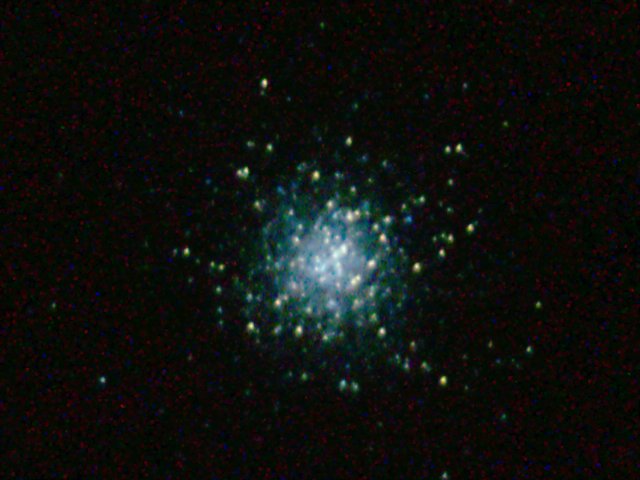
This image of the Great Cluster of Hercules, M13, is a single 30″ exposure like the image of Alberio, but with the much dimmer object comes a lower signal-to-noise ratio. Imaging objects like this is where the SBIG becomes vastly superior to a digital SLR like the D90. As with the Alberio image, this image could be improved by combining multiple exposures.
First of all, the photos below were not taken by me, but by my honors student this semester. So far, the images have been pretty good, given the level of light pollution here in the middle of town. All of these images were aquired using our 12″ Meade SCT and an SBIG ST-8XME Camera and an SBIG CFW-8 filter wheel. The first is a color image of Jupiter. The red filter we have is a bit too broad and has a higher transmittance than the green and blue filter.

The next image is of the Great Cluster in Hercules, M13. This image is the combination of multiple short exposures co-added to yield a single, more detailed image.

This last image is a mosaic of five images to create a single image of the 1st Quarter Moon. …ok, slightly past 1st Quarter. The image was taken using our blue filter.
